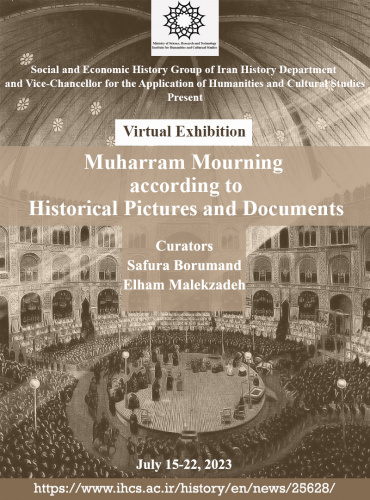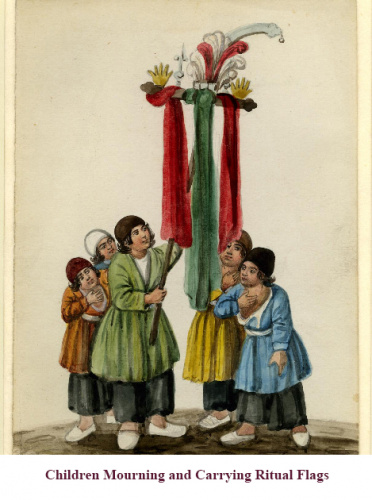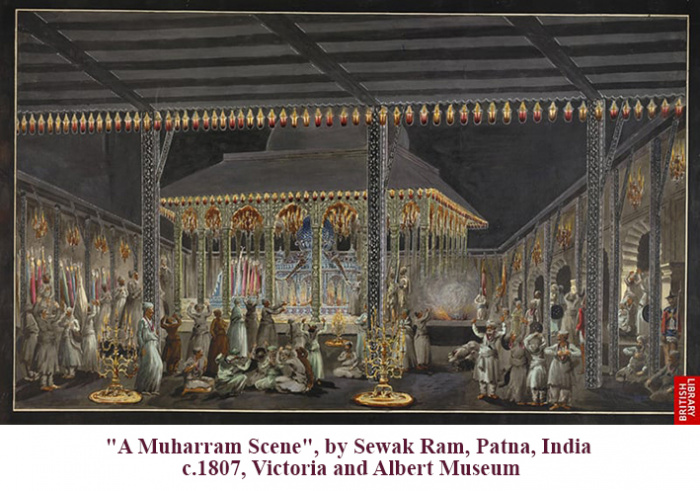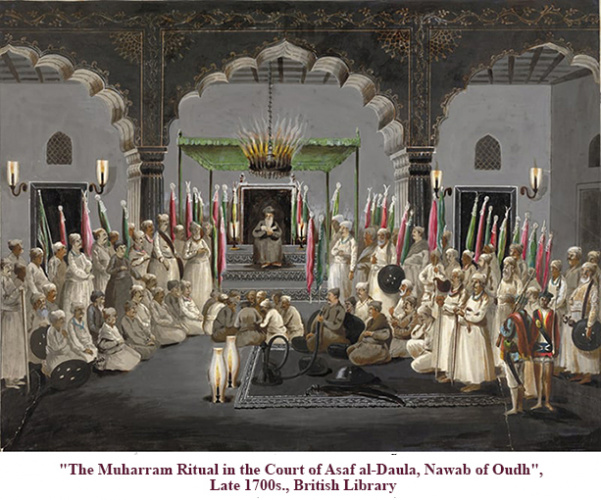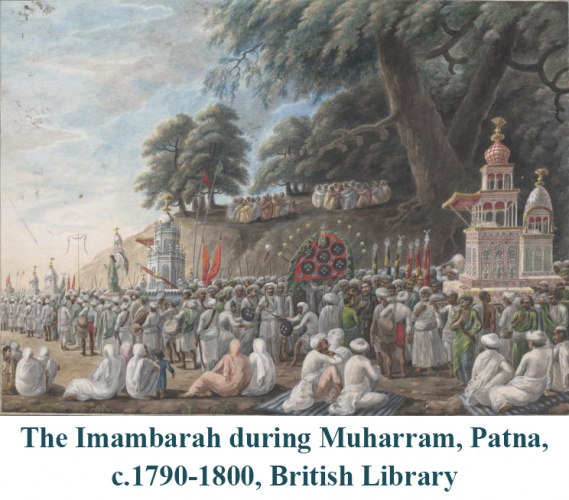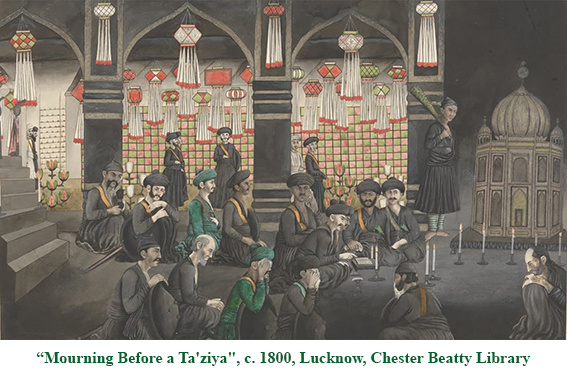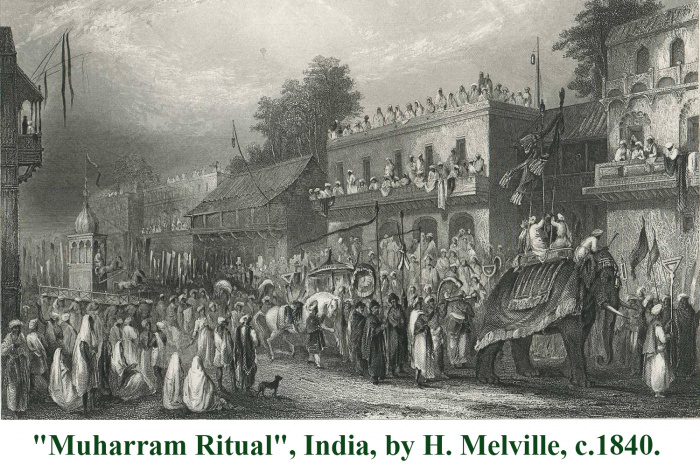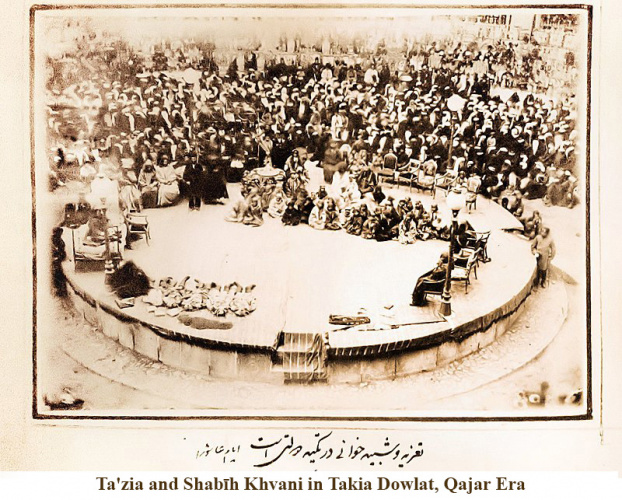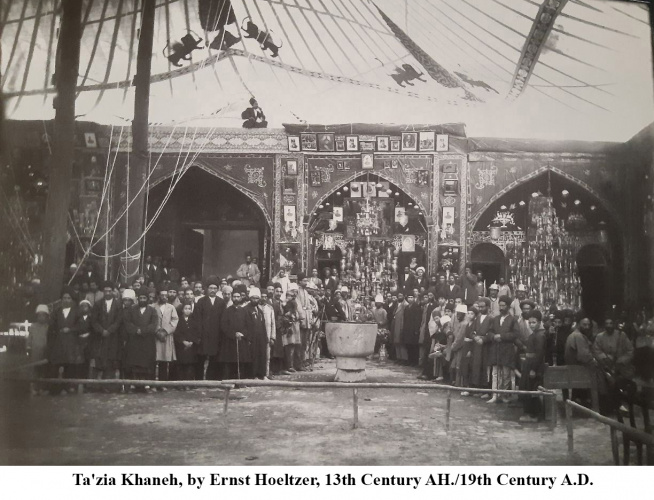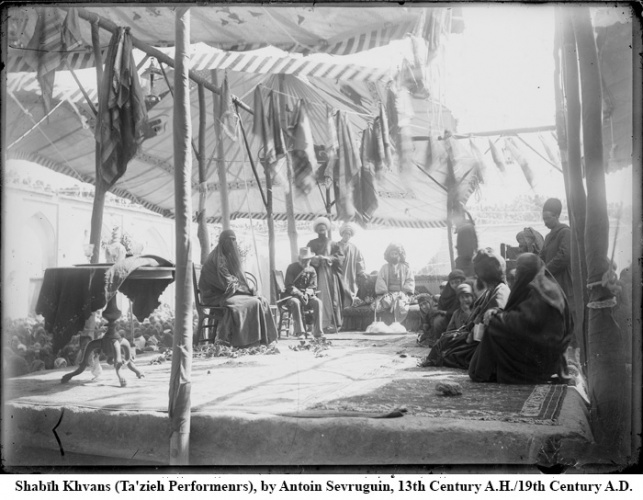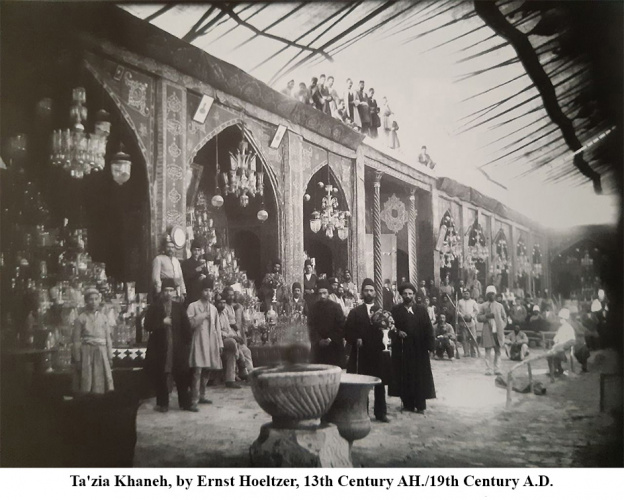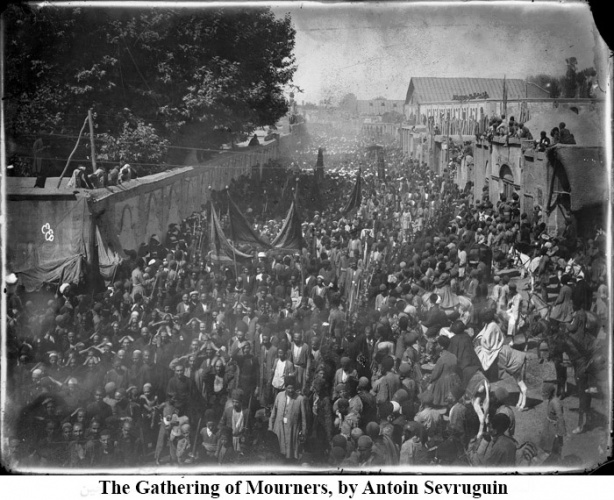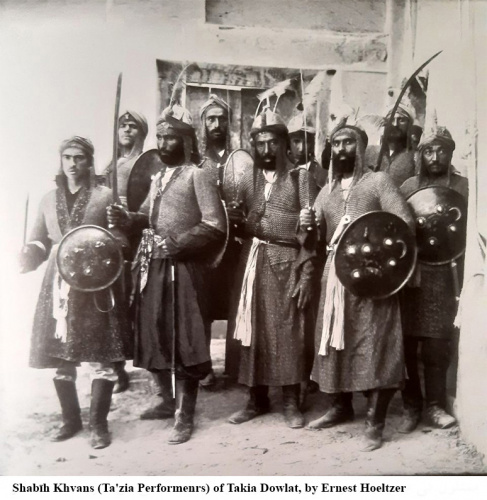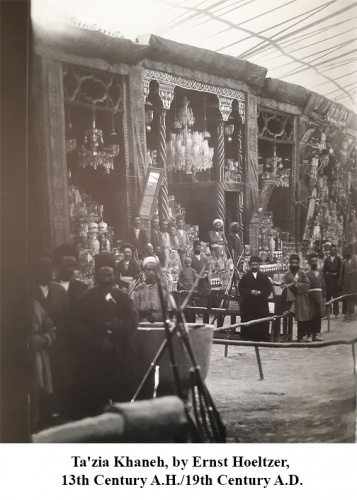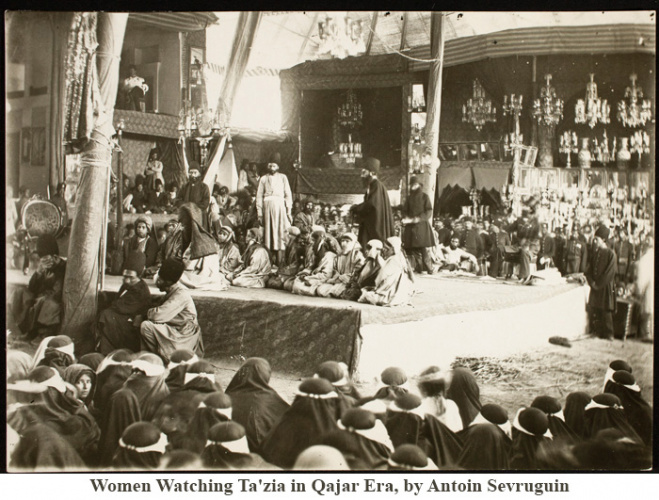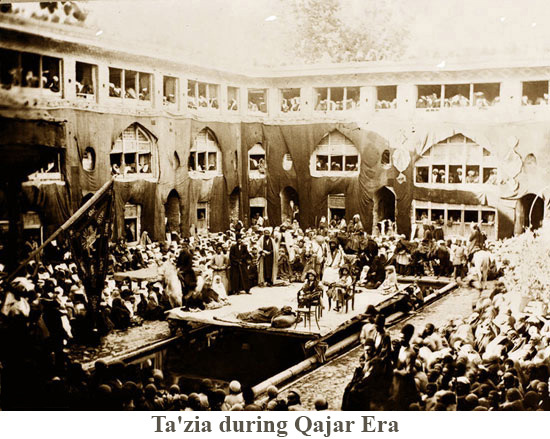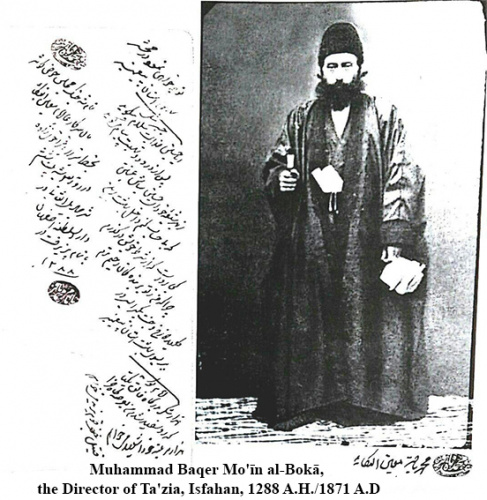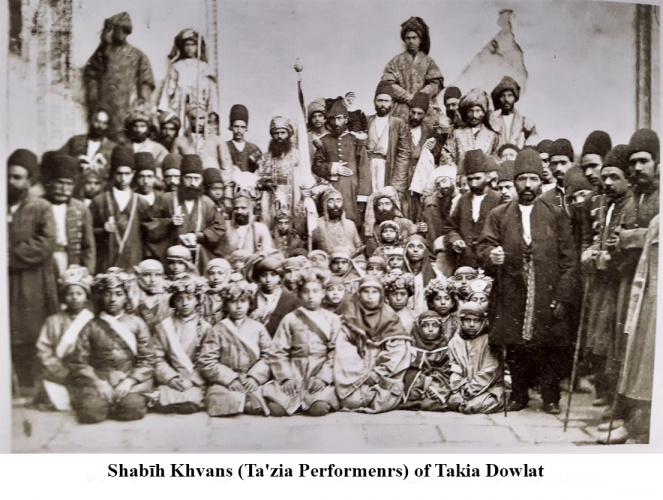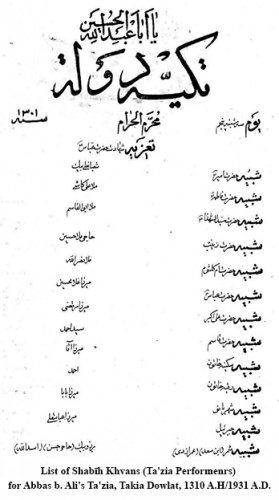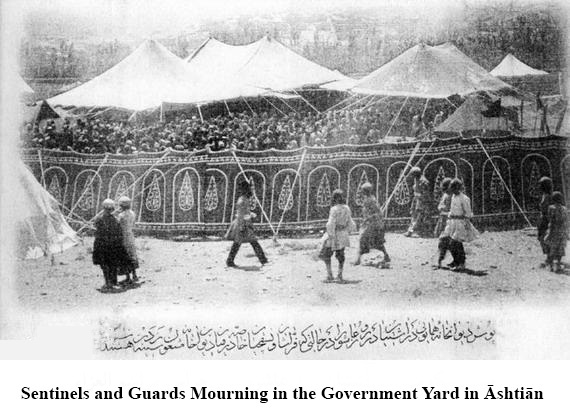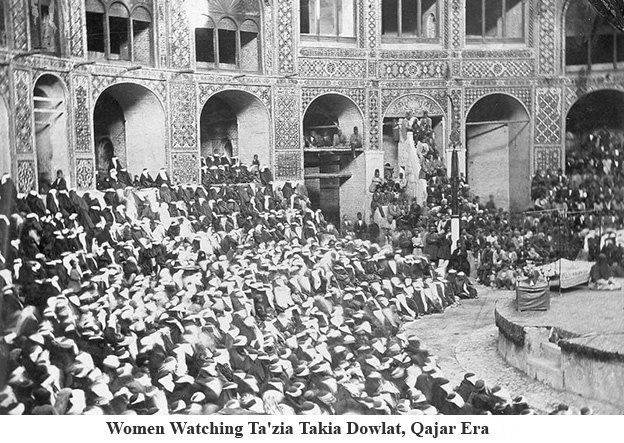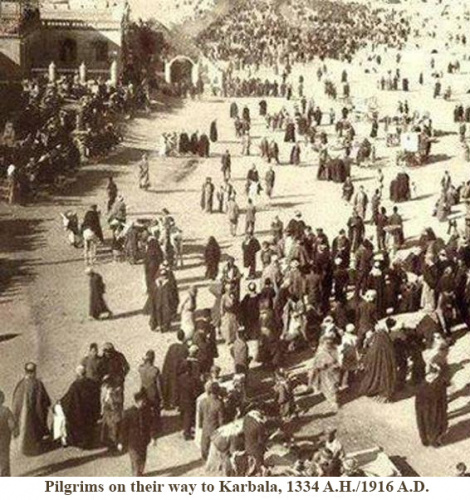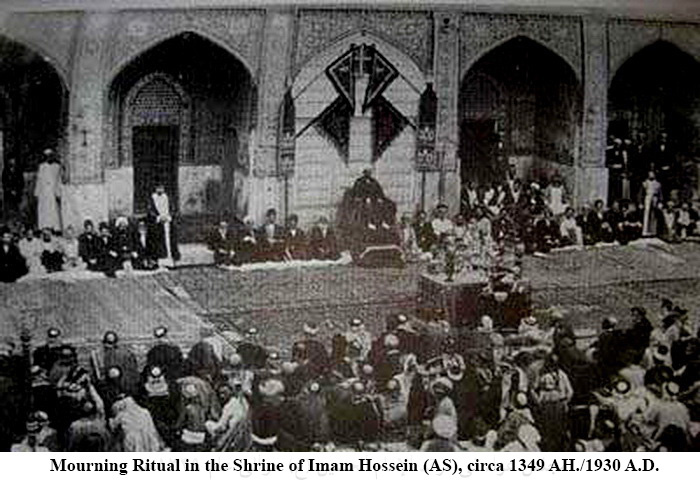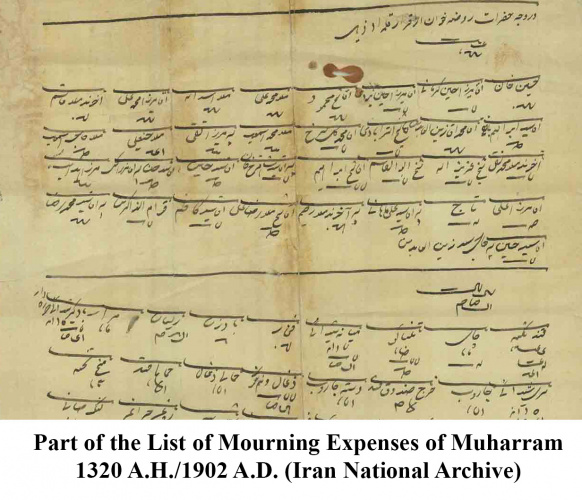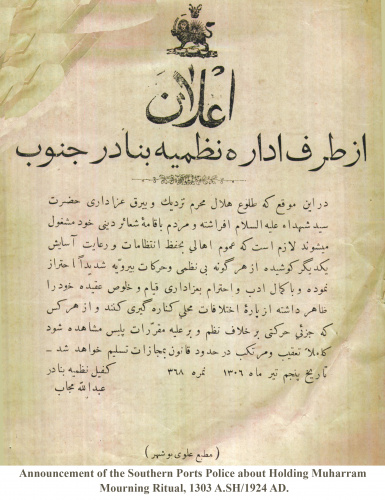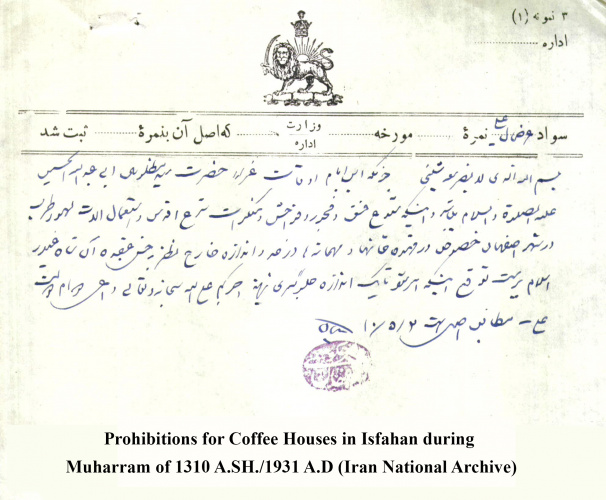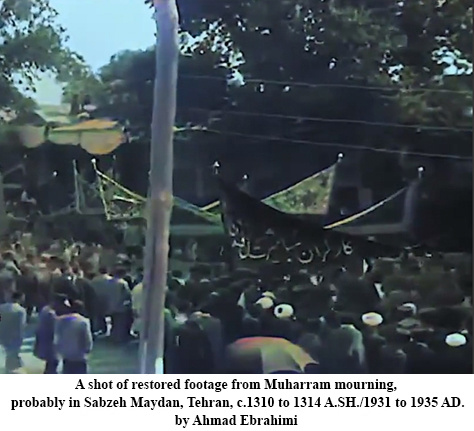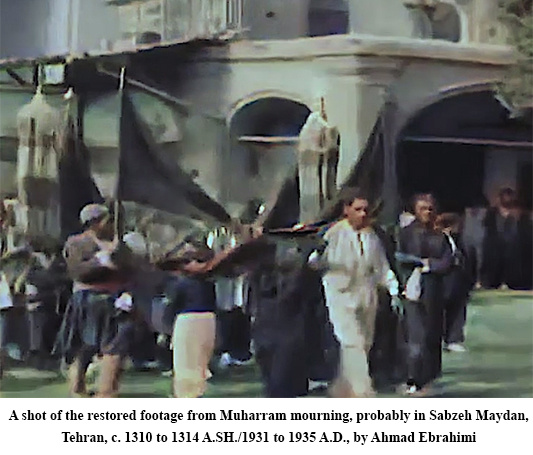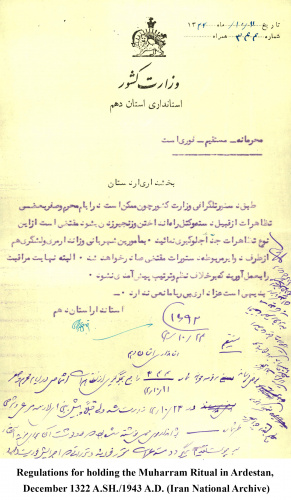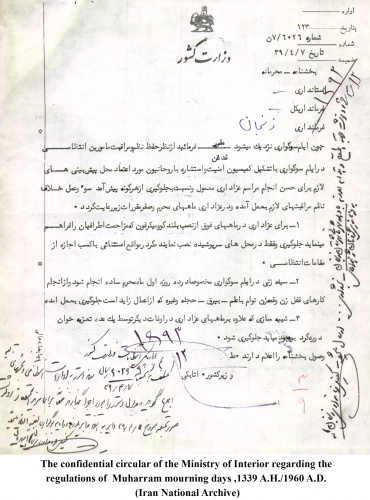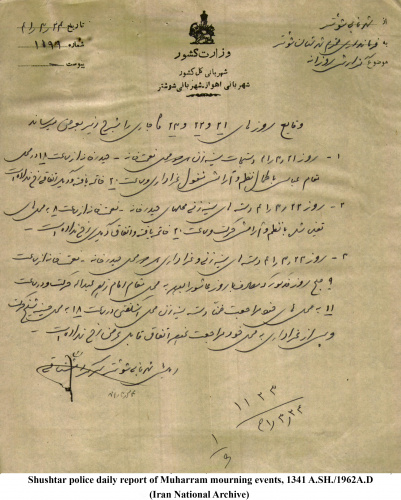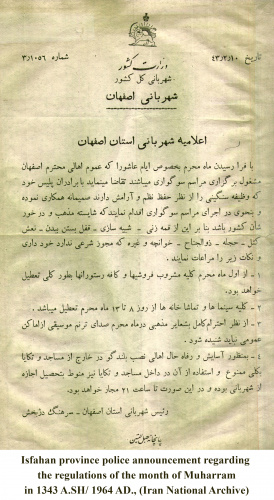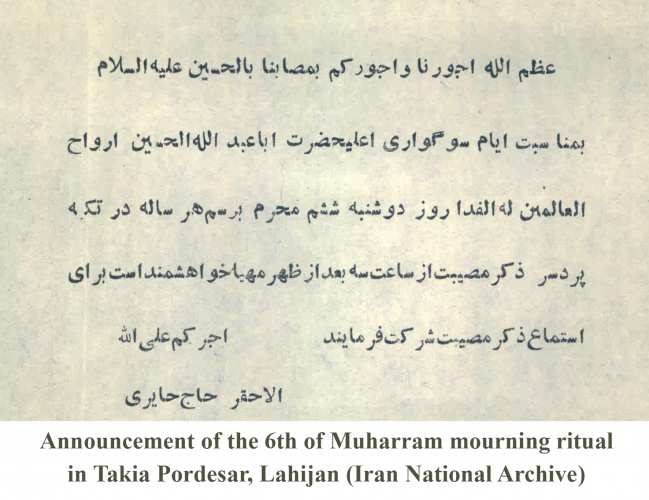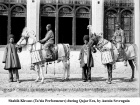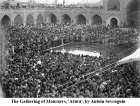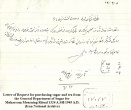Social and Economic History Group of Iran History Department and Vice-Chancellor for the Application of Humanities and Cultural Studies Present
Virtual Exhibition: Muharram Mourning according to Historical Pictures and Documents
We suggest using a laptop to view the images with better quality
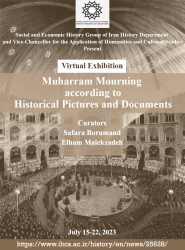
Muharram mourning, as an intangible cultural heritage, encompasses socio-cultural practices. Therefore, it is possible to gain a deeper understanding of this tradition by examining its customs and influence on popular culture. The rituals and religious ceremonies that take place during Muharram, particularly in the first ten days of the month, are centered around mourning the martyrdom of Imam Hussain (AS) and his companions. These observances are intertwined with various socio-cultural themes across different ethnic group. Consequently, studying Muharram mourning necessitates an examination of a range of rituals, drawing from fields such as anthropology, social and cultural history, literature, popular culture, and art history. Through interdisciplinary research, we can obtain a comprehensive understanding of the concepts and meanings behind these mourning rituals. Notably, extensive research on Ta'ziya, a form of religious theater associated with Muharram, has yielded valuable insights.
While a significant portion of Muharram mourning rituals have been transmitted through oral tradition, surviving visual depictions offer glimpses into their historical background. The oldest existing pictures of Muharram mourning are paintings and sketches created by tourists or European cultural and political representatives. Notably, watercolor and engraving designs portraying Muharram mourning in Shiite regions of India during the 13th/19th century are among these works. Additionally, a collection of photographs captures mourning ceremonies, Ta'ziya performances, its performers, and religious buildings such as Hosseiniyehs and Takayas. Ernst Hoeltzer and Antoin Sevruguin are among the photographers who took an interest in documenting these images. In addition to paintings and photographs, collections of documents provide valuable insights into the organization and government regulation surrounding Muharram mourning.
This virtual exhibition displays a selection of historical paintings and photographs related to Muharram mourning restored in museums, and private collections. Furthermore, it includes a compilation of archive documents from the Iran National Archive, featuring correspondences, announcements, and government regulations pertaining to Muharram mourning. It is evident that comprehending the historical context of Muharram mourning requires extensive interdisciplinary research, which in turn yields valuable information about the socio-cultural history of these religious rituals. We hope that this virtual exhibition will inspire further research and generate new ideas.
Safura Borumand, Elham Malekzadeh
July 15, 2023
*We suggest using a laptop to view the images with better quality.


